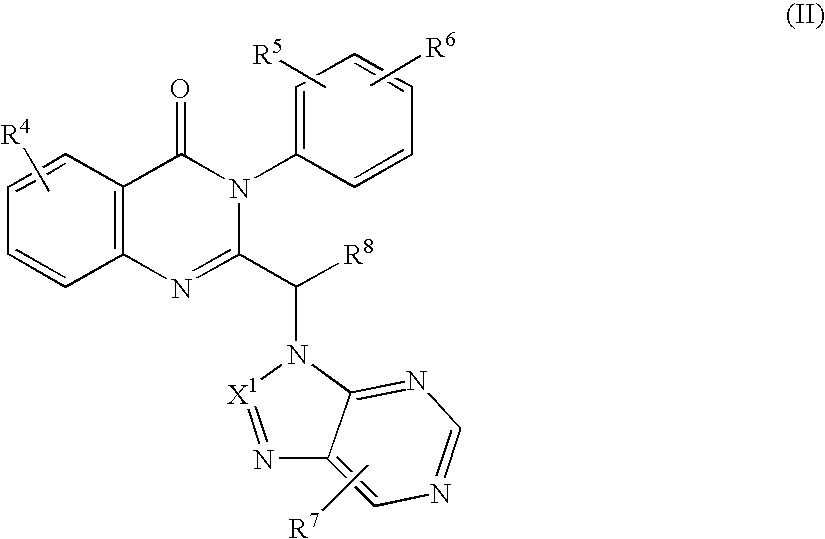Methods for treating and/or preventing aberrant proliferation of hematopoietic cells
a technology of hematopoietic cells and aberrant proliferation, which is applied in the direction of biocide, heterocyclic compound active ingredients, drug compositions, etc., can solve the problems of low survival rate of disease, anemia and/or thrombocytopenia, and affect the ability of individuals to fight infection
- Summary
- Abstract
- Description
- Claims
- Application Information
AI Technical Summary
Benefits of technology
Problems solved by technology
Method used
Image
Examples
examples
[0144] The following examples are provided merely to illustrate the invention, and thus are not intended to limit the scope thereof.
examples 1
Western Blot Analyses of Hematopoietic Cells
[0145] In order to investigate whether specific therapeutic targets could be identified in AML cells, the expression and activation of signaling proteins involved in the PI3K pathway was determined by Western blot within primary blast cells isolated from 64 AML patients.
[0146] Additionally, the expression of the p100α, p110β, and p110δ isoforms of the class Ia PI3Ks was studied by western blot in 7 PI3K+ cell samples (defined as cells in which PI3K / Akt pathway is constitutively active) and 1 PI3K− cell samples (defined as cells in which PI3K / Akt pathway is not constitutively active, but is activatable), using isoform-specific antibodies. Controls for the p110α, p110β, and p110δ isoforms were p110α recombinant, p110β recombinant and p110δ recombinant proteins, respectively. These Western blot analyses demonstrated that the p110δ isoform of PI3K is consistently expressed in certain AML patients.
[0147] The following procedure was used for ...
examples 2
Confocal Microscopic Analysis
[0162] Phosphorylation of Akt and FOXO3A were also determined by confocal microscopy performed on bone marrow cytospins (BMMCs centrifuged onto glass slides) deprived for 4 h in serum-free medium. The Ser473 phosphorylation status of Akt was also assessed on cytospins of cells treated as described above for immunoblot analysis.
[0163] Confocal microscopy was performed using an inverted scanning confocal microscope equipped with UV as well as visible illumination (488 nm, 568 nm, and 647 nm) (Biorad MRC 1024 coupled with a NIKON diaphot 300 inverted microscope). Frozen or fresh bone marrow samples (cytospins) were fixed with PBS containing 4% paraformaldehyde, permeabilized with PBS containing 0.1% Triton, blocked for 45 min with PBS containing 5% nonfat dry milk; and incubated in primary anti-phospho Akt antibody (Cell Signaling 9277; used at 1 / 100 dilution ratio in PBS containing 5% nonfat dry milk) or anti-phospho FOXO3A antibody (Cell Signaling 9464;...
PUM
| Property | Measurement | Unit |
|---|---|---|
| average molecular weight | aaaaa | aaaaa |
| average molecular weight | aaaaa | aaaaa |
| average molecular weight | aaaaa | aaaaa |
Abstract
Description
Claims
Application Information
 Login to View More
Login to View More - R&D
- Intellectual Property
- Life Sciences
- Materials
- Tech Scout
- Unparalleled Data Quality
- Higher Quality Content
- 60% Fewer Hallucinations
Browse by: Latest US Patents, China's latest patents, Technical Efficacy Thesaurus, Application Domain, Technology Topic, Popular Technical Reports.
© 2025 PatSnap. All rights reserved.Legal|Privacy policy|Modern Slavery Act Transparency Statement|Sitemap|About US| Contact US: help@patsnap.com



